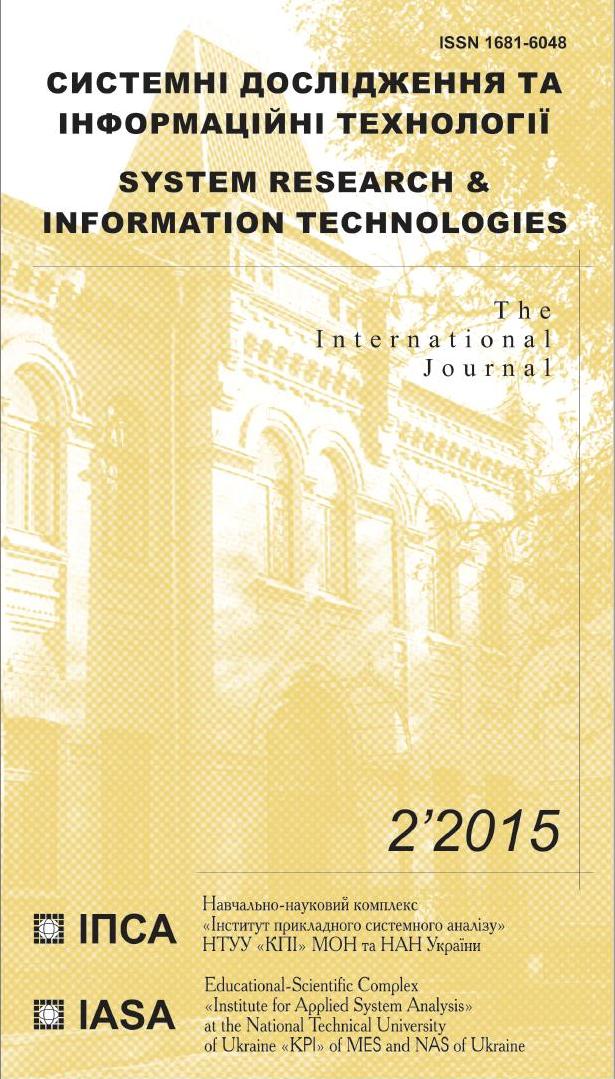Diagnosis based on multivariable fuzzy relations
Abstract
This paper deals with restoration of the causes (diagnoses) through the observed effects (symptoms) on the basis of multivariable fuzzy relations and the extended compositional rule of inference. The design of a diagnostic fuzzy system consists of solving fuzzy relational equations together with tuning of fuzzy relations on the basis of information from experts and experiments. We propose a method for solving fuzzy relational equations with the extended max-min composition. We also prove the properties of the solution set for such systems. The problem of finding the solution set is formulated in the form of the optimization problem, which is solved using genetic algorithms and neural networks. The essence of tuning consists of the selection such membership functions for fuzzy causes and effects, and also fuzzy relations, which minimize the difference between model and experimental results of a diagnosis. The proposed approach is illustrated by the computer experiment and the example of a technical diagnosis.References
Zade L. Ponyatiye lingvisticheskoy peremennoy i eye primeneniye k prinyatiyu priblizhennykh resheniy. — M.: Mir, 1976. — 166 s.
Di Nola A., Sessa S., Pedrycz W., Sanchez E. Fuzzy relation equations and their applications to knowledge engineering. — Dordrecht: Kluwer Academic Press, 1989. — 278 p.
Peeva K., Kyosev Y. Fuzzy relational calculus. Theory, applications and software. — NY: World Scientific, 2004. — 304 p.
Markovskii A. On the relation between equations with max-product composition and the covering problem // Fuzzy Sets and Systems. — 2005. — 153. — Р. 261–273.
Yager R., Filev D. Essentials of fuzzy modeling and control. — NY: John Willey & Sons, 1994. — 408 p.
Gegov A.E., Frank P.M. Reduction of multidimensional relations in fuzzy control systems // Systems & Control Letters .—1995. — 25 (4). — 2002. — Р. 307–313.
Pedrycz W., Vasilakos A.V. Modularization of fuzzy relational equations // Soft Computing – A Fusion of Foundations, Methodologies and Applications. — 2002. — 6 (1). — Р. 33–37.
Duan J.-C., Chung F.-L. Multilevel fuzzy relational systems: structure and identification // Soft Computing. — 2002. — 6 (2). — Р. 71–86.
Rotshteyn А.P., Rakityanskaya А.B. Diagnostika na osnove nechetkikh otnosheniy // Аvtomatika i telemekhanika. — 2007. — № 12. — S. 113–130.
Rotshtein A., Rakytyanska H. Diagnosis problem solving using fuzzy relations // IEEE Transactions on Fuzzy Systems. — 2008. — 16 (3). — Р. 664–675.
Rotshteyn А.P., Rakityanskaya А.B. Аdaptivnaya sistema diagnostiki na osnove nechetkikh otnosheniy // Kibernetika i sistemnyy analiz. — 2009. — № 4. — S. 135–150.
Rotshtein A., Rakytyanska H. Fuzzy evidence in identification, forecasting and diagnosis. — Heidelberg: Springer, 2012. — 314 p.

